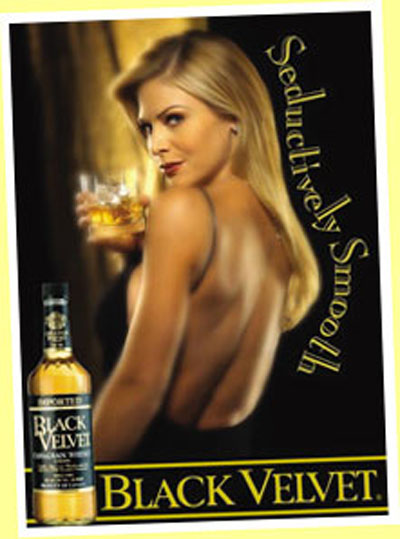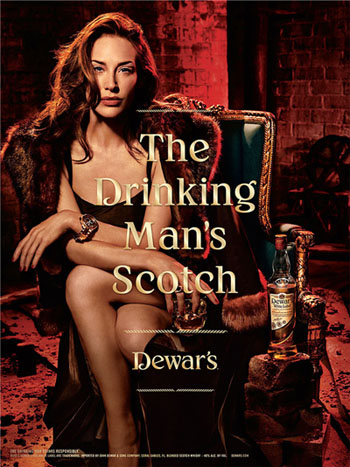

| What's In The Glass? |


It has become a stigma in our culture that
being manly is repressing your emotions; therefore enduring a strong bite in your alcohol
is the physical representation of enduring life. This refined taste is usually associated
with an older man, one that has been through the trials and tribulations of life. It has
become a sign in our culture that with age comes sophistication and it is the same with
whiskey. Whiskey can be seen as synonymous with that of an older man. Culture and age are
what make whiskey and men who they are. Whiskey that is perceived as classy has been
through and extensive aging process and if the developers take as much time to make a
'perfect' product you as a consumer should take the time to enjoy it as it was made. As
you can notice polysemy comes into effect. Polysemy is considered, "the result of both
compositional operations in the [lexica] semantics, such as coercion and co-composition,
and of contextual effects, such as the structure of rhetorical relations in discourse and
pragmatic constraints on co-reference", or in more simplistic terms a sign that has
multiple meanings (Willems 238). Through the eyes of a heterosexual male growing up
in the south, drinking your whiskey straight has become almost as a rite of passage. My
family once coerced me into drinking "snake bite" (whiskey neat) out of a flask while I
was a boy hunting. My grandfather told me that if I wanted to warm up and put some hair on
my chest I should take a swig from his flask. As a prepubescent boy it was hard to make
myself do it, although, when I summed up the strength to swallow the harsh liquid I
immediately felt older and more knowledgeable. These meanings are from the diegesis of my
observation. The essay "Pursuing the Meaning of Meaning" explains packaging in the
advertising world perfectly, "the marketer seeks to construct an image of the intended
consumers and to shape their motivational and behavioral responses to the product" (Mick
et al 14-15). These techniques have worked to anchor the meaning I associate whiskey with.
They have created a culture through advertising that strengthens and reaffirms what ideals
have been created through my own experience. It is not clear that advertising alcohol has
a direct effect on consumption however, "changing attitudes towards drinking, personal
preference shifts in brand choice or the creative appeals used by the brands, may no doubt
have had an impact on consumption of these brands" (Wilcox, Kacy, Schulz 830).


|
|
Mary Yoko Brannen, et al. "Pursuing The Meaning Of Meaning In The Commerical World: An International Review Of Marketing and Consumer Research Founded On Semiotics." Semiotica 152.1-4 (2004):1-74. Communication & Mass Media Complete. Web. 7 May 2013.
Salvador, Pau. "The Myth Of The Natural In Advertising." Catalan Journal Of Communication & Cultural Studies 3.1 (2011): 79-93. Communication & Mass Media Complete. Web. 7 May 2013
Wilcox, Gary B., Kim Kyunkok Kacy, and Heather M. Schulz. "Liquor Advertising And Consumption In The United States: 1971-2008." International Journal of Advertising 31.4 (2012): 819-834. Communication & Mass Media Complete. Web. 7 May 2013
Willems, Klass. "The Linguistic Sign At The Lexicon-Syntax Interface: Assumptions And Implications Of The Generative Lexicon Theory." Semiotica 193.1-4 (2013): 233-287. Communication & Mass Media Complete. Web. 7 May 2013